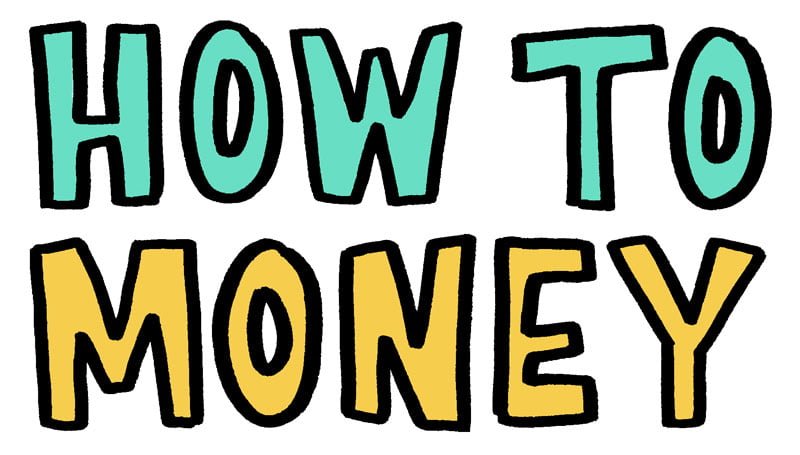While most of us dread filing our taxes, about 75% of us look forward to receiving a massive refund check (or more likely, direct deposit) each year. The average tax refund for 2022 was a whopping $3,176 – more than what most Americans have in their savings account!
Large windfalls like this don’t occur that often, so it’s no surprise that many people find it challenging to use that money wisely. Should you treat yourself and splurge on something fancy that you’ve been really wanting? Or should you prioritize saving and investing for the future?
Basically, should you live in the moment or take the #adulting approach?
For most people, we think that an even more thoughtful approach is in order. Depending on your specific situation, here are some thoughts on what to do with your tax return money when it lands in your account.
But first, let’s quickly chat about why tax refunds aren’t actually a good thing…
Why You Shouldn’t Even Have a Tax Refund
If you’re receiving several thousand dollars in returned taxes, it means you are paying too much tax throughout the year. It’s kind of like giving money unnecessarily to the government each month, to hold it as an interest-free loan.
If you get a big refund every year, it might be time for you to make adjustments to your tax withholding. To determine what type of adjustments you’ll want to make, the IRS has a tax withholding calculator/estimator to assist you. These are adjustments you can make on your W-4 form, which every employer should be able to supply you with.
The closer you can get to a $0 refund the better off you are. This means having more money during the year, more flexibility every month, and less of a headache trying to figure out how to allocate a big chunk of tax return money.
OK, now let’s get to the different ways you can manage a lump sum, if you get one.
Top 5 Ways to Use Your Tax Refund
There’s no single right way to spend your tax return. Keep in mind that everyone’s situation is a little different. And no person’s tax situation remains static. It changes each and every year too! So much of what you choose to do depends on your specific situation. But we’ll offer our best advice for how to use this influx of money.
1. Pay Off Debt
Ditching high-interest rate debt (if you have any) is one of the first moves you should make. Trying to build wealth while paying off debt is like running up an escalator that is traveling downwards. It’s slow and exhausting.
These days the average credit card interest rate is between 15-25%. It’s almost impossible to safely invest and earn a return like that anywhere else. When you pay down debt, you’re saving yourself exactly the rate at which you are paying in interest. It’s risk free, immediately freeing, and makes a massive difference to your bottom line.
This makes paying off credit card debt, personal loans, and other double-digit interest rate debt a slam dunk choice with those tax refund dollars.
Related reads:
2. Boost Your Savings & Emergency Fund
Most Americans have less than $1,000 in savings, not enough to pay for common emergencies. That’s why we strongly suggest you consider putting at least a portion of your return into a savings account earmarked for emergencies.
Even those who feel they might have the most stable job could just be a Zoom call away from being let go. Sad, but true.
Having the minimum recommended $2,467 set aside to handle small bumps in the road is advisable. But having a more robust emergency fund of three months worth of living expenses set aside is even better.
It’s called an emergency fund because you can’t plan for everything in life. The idea is that by having cash on hand you are going to help prevent yourself from going further into debt when your car breaks down, your A/C goes out, or there’s a plumbing leak at your house. Think of an emergency fund as insurance against taking on debt.
Furthermore, in a recession, cash is even more valuable than it would otherwise be. It can help you pay rent or your mortgage and can help ease stress and anxiety. In times like this, cash is most definitely not trash. A proper emergency fund is one of the best ways to recession proof your finances. And this tax refund can go a long way toward helping you get yours up to snuff.
3. Investing Options
There are many different investment strategies you can use with your tax return money. If you’re employed by a company that offers a retirement account match, this is a meaningful perk – free money that we want you to take advantage of! This tax refund can help you fund that workplace account for the year so that you at least snag that full match amount.
Additionally, look to HSAs, Traditional and Roth IRAs, and taxable brokerage accounts if you’re eligible and have access. If your job is stable and you have solid savings, start investing more. And take advantage of the tax breaks associated with funding these accounts.
Another option…Using your tax return money to invest in yourself might prove beneficial. Benjamin Franklin once said, “an investment in knowledge pays the best interest.” This could be attending a conference, workshop, or seminar in the field of your passion. Many universities offer continuing or professional education courses either in classroom or online that offer a wide array of certificate-based programs designed to help you advance in your career.
If you are the entrepreneurial type, maybe you are working on launching a small business or side gig and could use some money to get that endeavor off the ground. These are just a few examples of how you can invest in yourself in hopes of creating better options for your future. If you take a $1,000 class, that could lead to a $10,000 a year raise with your employer. That’s a smart investment! Think beyond how you can use this money in the short-term and push yourself to think about it as seed money to help you accomplish more long-term ones.
4. Donate or Give it Away
Are you passionate about a cause and have a servant’s heart? If so, there is no shame in donating to something you truly believe in. We wholeheartedly support giving a portion of your money away. It creates a healthy detachment to your finances and gives you the chance to see that donation have an impact that is bigger than you.
Giving money away to nonprofit organizations can also come with a helpful tax break. If you have been financially fortunate, consider the importance of giving some of that wealth away to help others.
Another cool idea… give the money away to your own family or friends. Someone you know may be struggling financially and you could be their lifesaver. Or, think about opening an investment account for your kids – or even your nephews/nieces. Think of all the good you could do with that lump sum of a tax refund!
Related posts:
- How to properly vet a charity
- Pros and cons of donor advised funds
- Daffy Review (if you are considering setting up a Donor Advised Fund!)
5. Spend it Baby!
It’s tempting to blow some (or all) of your tax return money on material items you’ve been eye-balling for a while. Like that new 80-inch, curved TV, or the latest iPhone. You might even have a dream vacation you’ve been longing to go on.
Spending some of this money on yourself isn’t a bad thing. There’s no harm in spending 10% of any financial windfall any way you see fit. Having some fun with a portion of this money and prioritizing today over your future isn’t something to feel guilty over. It should be a celebration!
While it’s necessary and empowering to save for your future, don’t let that be the detriment of enjoying some of the finer things in life right now.
The Bottom Line:
For many of us, getting a large tax return is like winning a small lottery. Remember your tax refund isn’t just extra money you found in the sock drawer. It’s income that you earned during the previous tax year. Additionally, it’s money that you’ve given as an interest-free loan to the federal government. So be wise with it!
If you’re part of the ~75% of Americans who are in line to receive a large refund, you may be claiming fewer allowances on your W-4 than you should. Consider readjusting your income tax withholding to ensure more money is in your pocket every month. Then it can be put to better use, earlier each year.
You might not be in a position to disperse the funds toward the five suggestions offered in this article, but do think about what the wise decision would be for your stage of life. You worked hard for your refund. Now let your refund work hard for you.
**Feature pic by Alexander Mils on Unsplash




